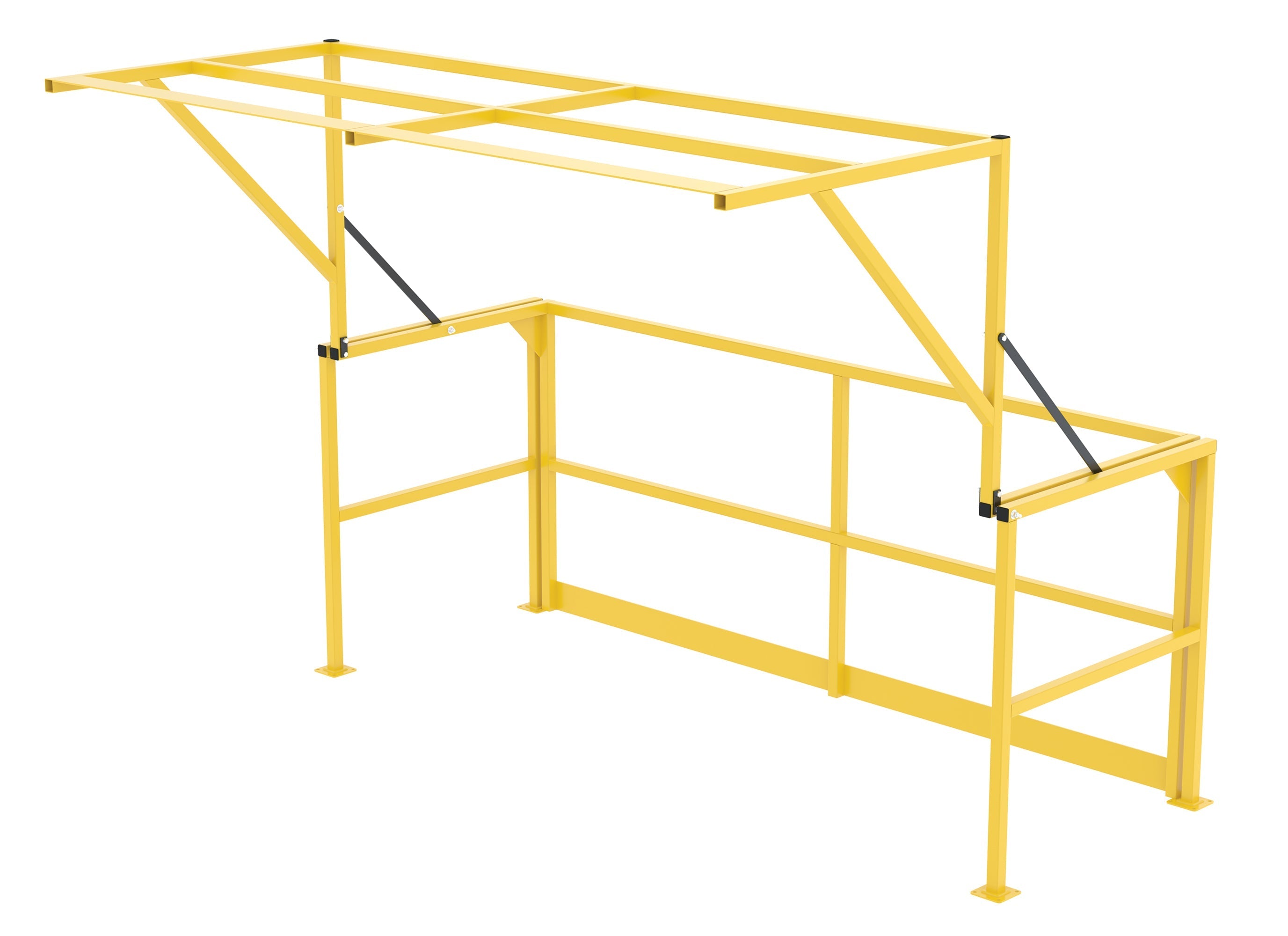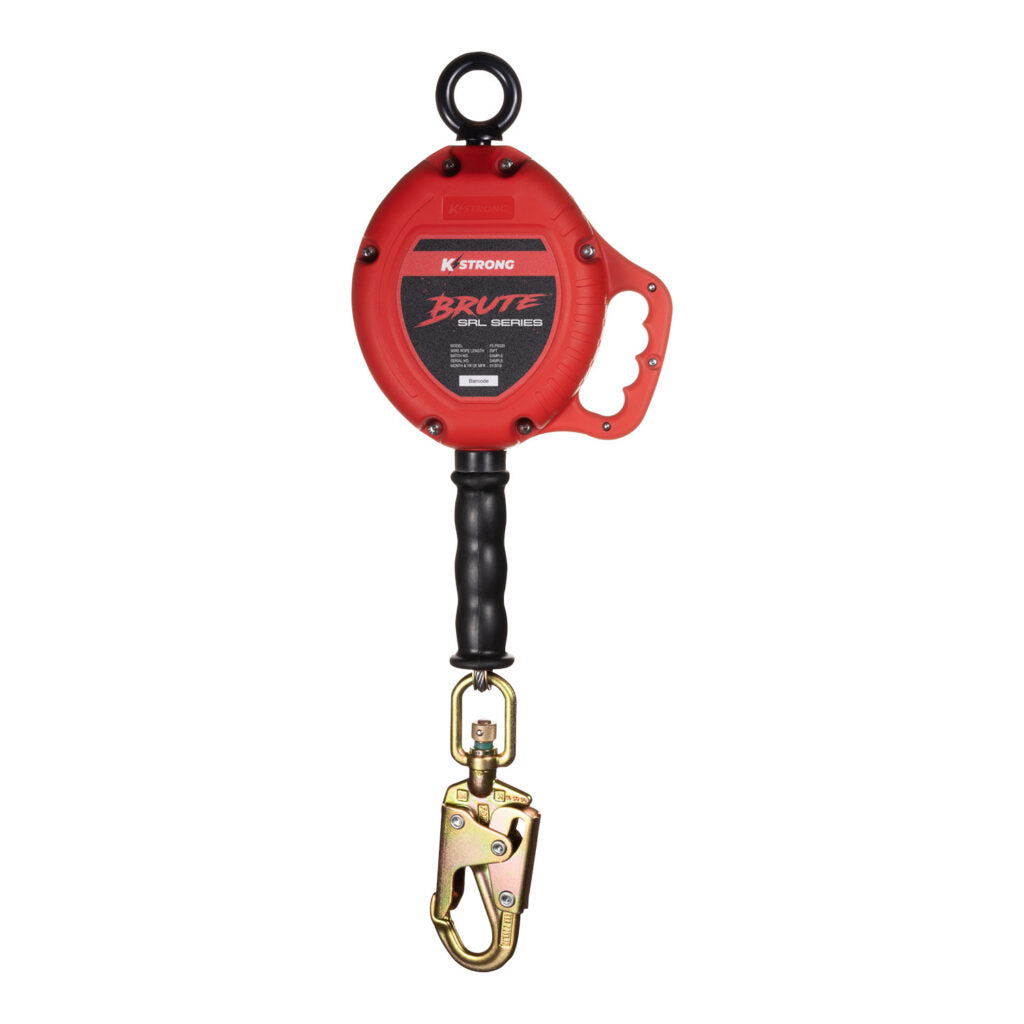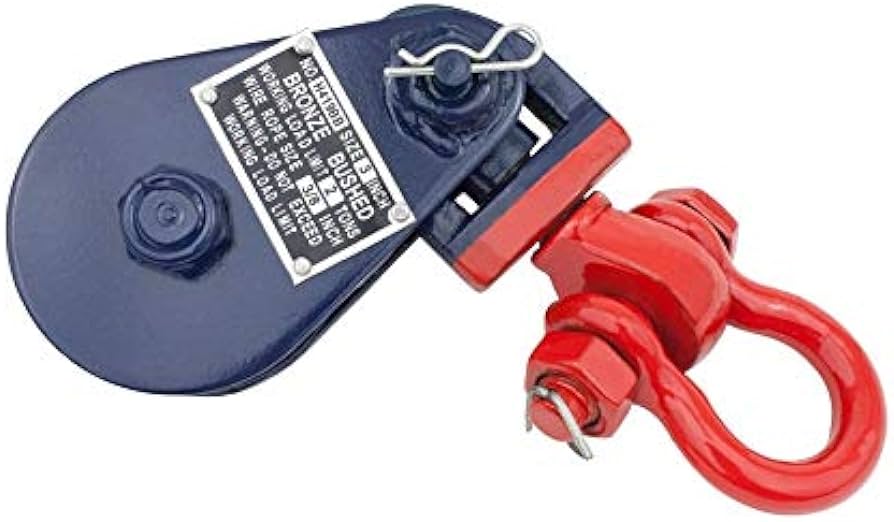A refresher course on simple machines
You’ve likely heard of simple machines since elementary school. Quick reminder: the inclined plane, wheel and axle, wedge, screw, lever, and the pulley. Each of them is designed to change the direction or magnitude of force. For example, when an axe head – a wedge – bites into a log, the force enters the log from the direction of the swing, then diverts outwards from the cheeks of the axe, forcing the log apart and splitting the wood.
These simple machines give you mechanical advantage. This is defined as the advantage you gain by using a mechanism to transmit force.
Pulleys are simple machines used to make lifting easier. A fixed pulley is useful to redirect force. If you imagine lifting a cement block, you can either fight gravity and lift it upwards, or you can attach it to a rope, run the rope through a pulley above it, and pull the rope downwards. In this way, the pulley has redirected the force: you’re exerting downward force, to move an object upwards. However, the total force required has not changed.
A movable pulley plus an anchor point gives mechanical advantage
But magic happens when you bring a movable pulley into play. You can give yourself an even greater mechanical advantage. The end of the cable or rope is no longer attached to the item to be moved; instead, it is secured to an anchor point, and a pulley attached to the rope close to the load itself. The force needed to lift a load can be cut in half by adding a movable pulley between the fixed pulley, the load, and the anchor point.
The ultimate movable pulley is called a snatch block. This is a heavy-duty pulley (or sheave) inside a metal casing. While typically the end of a rope threads into the groove in a pulley wheel, the casing of a snatch block opens to fit around the rope. This means you can attach the load to it, and then add it to the rope, at any point along the rope.
This gives yourself significant mechanical advantage. It can both change the direction of force, and reduce the amount of exertion needed.
The snatch block is a well-known hero in vehicle recovery
While the study of pulley systems could intrigue a classroom (or put them to sleep), it is far more interesting to find them in the wild. And one of the most common places you’ll find them is recovering stuck vehicles.
Have you ever gotten your own 4X4 stuck while off-roading? Or had the adrenaline kick of winching up to a tree to get back out? This is where you’ll find a snatch block in its natural habitat. 😉
Without this type of pulley system, you would anchor your winch cable to a tree, or maybe a rock. The drum in the winch rotates, re-winding the cable and (hopefully) pulling your stuck truck out of the mud.
But if you’re really stuck – if you need the force of your winch to increase in magnitude – then you’ll need to add a snatch block. This is how you’ll increase your mechanical advantage.
Instead of fastening the winch cable to a tree, you’ll attach the snatch block to a tree saver strap and run the cable through the pulley. It doubles back to the winch, then, and attaches back to your stuck vehicle.
This means your truck is both the force and the anchor point. The rope doubling back on itself effectively doubles the magnitude of force of the winch.
And remember we mentioned changing the direction of force? That’s what is at play when a second vehicle is needed to winch the stuck one out but can’t get to it face on. For example, the vehicles could be at 90° to each other due to lack of access. The cable passing through the snatch block will change both the direction and the magnitude of force.
Versatile and effective in multiple industries
Snatch blocks work with both synthetic rope and wire cable. They’re used in agriculture, in the marine industry, in manufacturing. You can use more than one at a time, giving yourself even more mechanical advantage. And because they can attach anywhere along the cable, they allow you to reach difficult angles or locations.
That’s the real beauty of snatch blocks. They turn difficult lifting and turning tasks into manageable processes. You’ll find them anywhere serious lifting is happening, from lifting construction materials to being used on boats. They are versatile, and efficient in multiplying force.
Check out our selection here, and increase your own mechanical advantage!






















